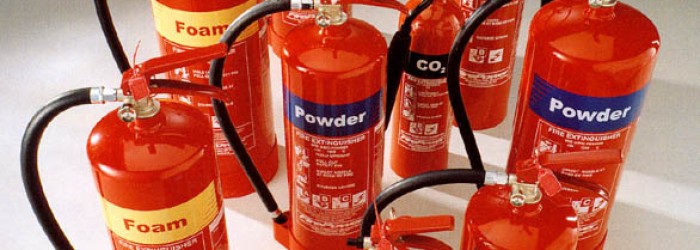
What Fire Extinguisher To Use On What Type Of Fire
A fire extinguisher is a critical piece of safety equipment anywhere, but some people don't realise that different types of extinguishers are required for different kinds of fires. Take a look at this handy list to help clear up any confusion, and make sure you have the necessary fire safety equipment to handle a situation. All extinguishers have their advantages and disadvantages and its essential that staff are aware of these and gain confidence in selecting and using them effectively.
It’s also important that key staff have attended a fire safety training course and received theoretical and practical fire safety training including a live fire demonstration. Staff will then have the opportunity to gain hands on experience tackling a live fire under supervision.
Classes of Fires
Fires are separated into several categories, depending on the materials that are burning, and fire extinguishers contents are made from different mediums to efficiently combat the flames.
Class A- is a fire consisting of every day solid type combustible materials such as wood and paper products, cloth, rubber and other common household items of that sort. Class A fires can be extinguished with water, water with additive, ABC dry powder (dry powder is messy!) or foam extinguishers.
Class B- these fires involve flammable liquids or liquefiable solids such as petrol, oil, paints, spirits, solvent, candles, greases. Certain flammable liquids can spread quickly and run the risk of re-ignition if not properly extinguished. Foam, dry powder or carbon dioxide types are suitable for these fires.
Class C- involves flammable gasses such as acetylene, propane, butane, methane. Dry powder extinguishers can be used but only highly trained people should use them. The best course of action would be to turn off the gas supply at its source and evacuate the area.
Class D- involves flammable metals such as magnesium, sodium, potassium, zirconium. These types of fires are unique industrial hazards and a special dry powder extinguisher with the correctly identified medium should be used.
Class F- these fires are caused by flammable cooking oils and fats, most commonly found in industrial kitchen environments involving a deep fat fryer. It is critical to use the proper extinguisher on these fires because of the likelihood of the fire spreading due to the powerful discharge of some extinguishers, or the inability to extinguish the fire with other types due to the high temperatures involved. A Class F, or wet chemical extinguisher is appropriate, as they have been specially developed for this type of fire.
Electrical Risks – Not a class of fire but can still be involved in a fire. Carbon dioxide and dry powder extinguishers are non conductors and can be used safely.
Fire training is a legal requirement and needs to be repeated regularly thereby ensuring staff have a better chance in extinguishing a small fire and prevent it developing into a major outbreak which could result in the loss of life, property and employment.